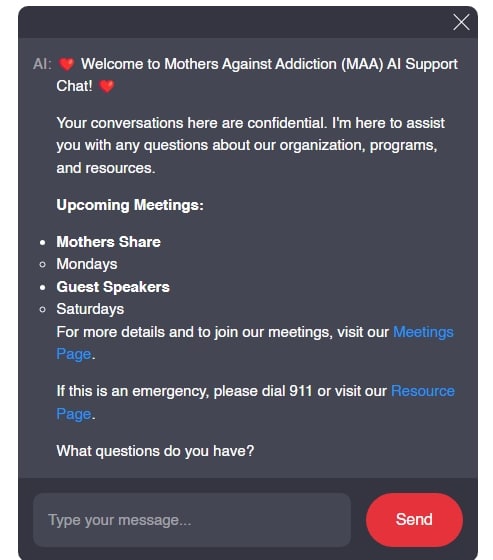In today’s fast-paced world, achieving balance can often feel like an uphill battle. However, understanding the eight dimensions of wellness can provide a holistic roadmap for parents facing challenges related to their children’s addictions. These dimensions offer a framework that emphasizes not just survival but thriving—an important concept as we face emotional turmoil. Each dimension represents a key part of living a fulfilled life, enabling families to reclaim joy and hope.
As parents navigating these turbulent waters, it’s crucial to recognize that our wellness impacts not just our lives but also influences our children. Understanding the eight dimensions of wellness can help us create a nurturing environment, not just for ourselves, but for those we love. The journey begins with embracing these dimensions and integrating them into our everyday lives.

The 8 Dimensions of Wellness Explained
Emotional wellness is about acknowledging and expressing feelings, effectively handling stress, and cultivating a positive mindset. Think of Brené Brown’s work on vulnerability; she emphasizes that opening up about our struggles is a strength, not a weakness. For parents, allowing ourselves to feel and express emotions helps to foster resilience—a vital trait in overcoming the challenges of addiction.
Furthermore, emotional wellness can be bolstered through resources like therapy or support groups. Finding safe spaces to express oneself can be powerful, especially when discussing addiction. Simple practices like mindfulness meditation can promote emotional balance as we cope with uncertainty.
This dimension especially highlights the importance of nurturing connections and fostering a sense of belonging. Whether it’s reaching out to friends or participating in local events, building a social network is key. Platforms like Meetup allow individuals to connect over shared interests, helping to create community relationships that provide emotional support.
For parents, establishing connections with other families experiencing addiction can greatly enhance social wellness. Support networks can share practical insights and emotional solidarity, which are incredibly valuable during trying times.
Physical wellness is crucial in reducing stress and promoting overall health. Engaging in regular exercise—such as joining a local sports league—has profound effects not just on fitness but also on mental well-being. Companies like Peloton equip individuals with tools that encourage physical activity from home, emphasizing how beneficial regular movement can be.
Along with exercise, a balanced diet plays a major role. Nourishing our bodies helps improve mood and energy levels, making it easier to cope with day-to-day challenges. For busy parents, meal-prepping and easy-to-follow recipes can contribute significantly to maintaining this critical wellness dimension.
Finding fulfillment at work greatly affects overall happiness. Companies like Google promote a positive workplace culture that fosters creativity and job satisfaction. When we engage in meaningful work, our sense of purpose can thrive, giving us the strength to face home challenges, like dealing with a child struggling with addiction.
For parents grappling with job stress, pursuing projects that ignite passion or setting boundaries to create a more balanced work-life dynamic can significantly enhance occupational wellness. It’s about appreciating what we do and finding meaning in our contributions.
Lifelong learning fuels personal growth. Online platforms such as Coursera offer access to courses from prestigious universities, making knowledge acquisition easier than ever. As parents, dedicating time to learn new skills, whether through hobbies or educational pursuits, not only keeps our minds sharp but also serves as a healthy distraction from stress.
Encouraging our children to engage in intellectual activities can also benefit them, nurturing their cognitive development as they navigate their own challenges. This could involve reading together or exploring new interests as a family.
Spiritual wellness transcends religious beliefs; it’s about finding meaning and alignment in life. Practices like yoga and meditation, popularized by figures such as Jon Kabat-Zinn, can create deeper connections with ourselves and our surroundings. These practices help parents cultivate inner peace, which can be especially grounding in stressful times.
For those who seek deeper meaning, attending community spiritual gatherings or exploring values can foster a sense of belonging and emotional safety—both crucial for healing families dealing with addiction.
A clean and safe living environment significantly impacts overall well-being. Initiatives by brands like Patagonia illustrate how a commitment to environmental sustainability contributes positively to communal health. As parents, creating a nurturing home environment, filled with clean air and greenery, can enhance our family’s overall well-being—transforming a space of chaos into one of comfort.
Simple efforts like setting up a recycling system or planting a garden can engage children and foster shared values around responsibility, ultimately building a healthier perspective of their role in the larger world.
Financial stress can cloud judgment and create anxiety, impacting every wellness dimension. Brands like Mint offer handy budgeting tools to manage personal finances efficiently. For parents dealing with addiction challenges, understanding and managing financial obligations can alleviate additional strain.
Building financial literacy among our families can empower both parents and children, making informed choices by addressing issues such as savings or recognizing how lifestyle impacts expenses.

The Basics in Behavior: Applying the Eight Dimensions
Understanding the eight dimensions of wellness lays the groundwork for positive behavioral changes. Below are practical steps to incorporate these dimensions into daily routines:
Metrics for Measuring Your Wellness Journey
Knowing and tracking progress is key to achieving balance across the eight dimensions of wellness. Here are some metrics to consider:
Crafting Your Path to Wellness
The path to wellness is unique for everyone. By embracing the eight dimensions of wellness, parents can customize their approaches to fit their lifestyles and aspirations. It’s essential to acknowledge how interconnected these dimensions are; efforts to improve one area can lead to positive changes in others.
As we embrace 2024, let’s commit to prioritizing our well-being and that of our families. By making informed choices that support our emotional, physical, and spiritual wellness, we create a nurturing environment that fosters healing and growth. Remember, together we can build supportive networks, enriching our lives while helping our children navigate their paths through addiction and beyond.
By understanding the eight dimensions of wellness and weaving them into our daily lives, we not only strengthen ourselves but contribute to a healthier, more compassionate community. With the resources available, including those found at Mothers Against Addiction, we can foster change and hope for a brighter tomorrow.
Eight Dimensions of Wellness: Fun Trivia and Interesting Facts
The Basics of Eight Dimensions of Wellness
Did you know that the eight dimensions of wellness encompass more than just physical health? They cover emotional, social, spiritual, intellectual, environmental, financial, occupational, and physical wellness. This holistic approach suggests that all aspects of life are interrelated. For instance, engaging in hobbies allows for both intellectual and social growth—consider how taking a creative class can open new doors while also fostering connections with others. Fun fact: setting smart goals can significantly enhance your journey through these dimensions. It makes reaching your New Year’s resolutions a lot more achievable!
Well-Being and Balance
Finding balance is vital, especially when you’re striving for wellness. The emotional dimension focuses on understanding our feelings, which can be especially beneficial when coping with life’s ups and downs. Here’s an intriguing tidbit: many parents wonder at what age do boys stop growing, and it spans into their late teens, which can be a time of emotional turbulence as they transition into adulthood. Meanwhile, the financial aspect can sometimes feel overwhelming; however, solutions like an EZ loan can pave the way for more stability, allowing you to focus on your mental well-being.
Fun Connections
Now, let’s delve into some exciting connections within these dimensions. Did you know that spending time in nature contributes to environmental wellness? Visiting unique spots like Marfa, TX can not only provide a mental escape but can also enhance your creativity and social connections. Speaking of creativity, have you explored Margaret Qualley’s movies and TV shows? Engaging with art and entertainment can uplift your spirits, further enriching your emotional and social wellness. And for those looking to get through tough periods, research has shown that managing stress effectively can also involve knowing how to pass a drug test, which adds another layer to your strategies for maintaining balance.
In the big picture, the eight dimensions of wellness remind us of the interconnected nature of our lives. By channeling energy into each area, we cultivate a richer, more fulfilling experience. Life can be a bit like a game of Melty Blood Type Lumina, where understanding the rules can empower you to maneuver more fluidly through challenges and triumphs alike. So, which dimension will you explore today?





























